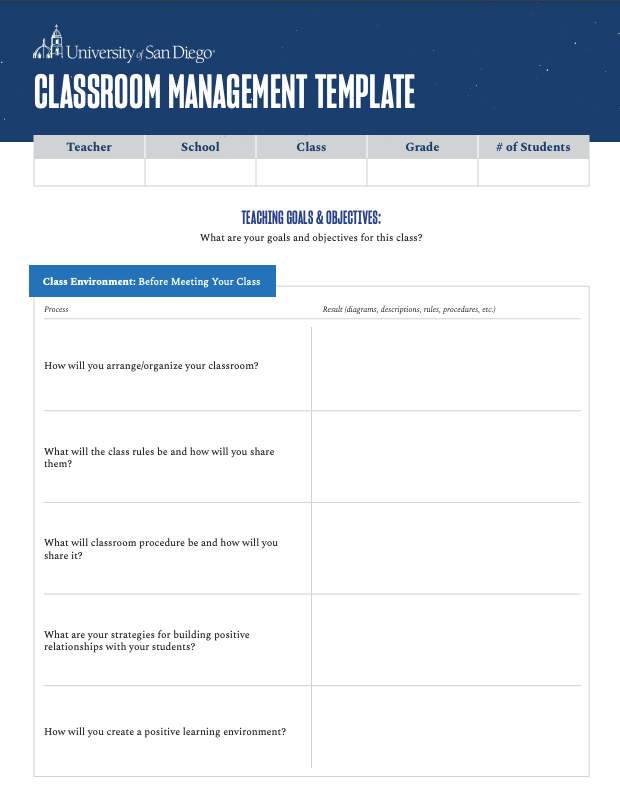

The life of a teacher is an extremely busy one. From early morning until long after dark, teachers dedicate the better part of their day to their students. Amid the lesson planning, the snack breaks, the recess duty, grading and the myriad other daily tasks, it can be easy to lose sight of the why of teaching.
Why are you drawn to the classroom, and what is it about your love of teaching that makes it a fulfilling career? What’s the overarching philosophy that guides your teaching practice? Even on the busiest school days, every teacher should be able to explain their “why” by returning to their teaching philosophy.
Simply put, a teaching philosophy is a written statement that includes:
A teaching philosophy statement should demonstrate that you are purposeful, reflective and goal-oriented each time you stand at the front of your class. Not only does committing this statement to writing help to solidify your own beliefs — it can help you collaborate with other teachers, apply for jobs and even write grant proposals. Ideally, evidence of your philosophy will be apparent in your resume and portfolio content.
Depending on the context, a teaching philosophy statement can be several sentences or several pages long. You will occasionally be asked to provide some form of this statement when applying for certain academic or administrative positions. Versions of it may also appear as the introduction to your teaching portfolio, as your LinkedIn bio, your resume objective statement or your bio for any accreditations (such as for contributions to a publication, awards, volunteer work, etc.).
You will likely never be asked to recite it. That said, when sitting for interviews, teaching applicants should demonstrate a clear teaching philosophy through their answers.
Think about your teaching philosophy as your teaching portrait.
Portraits can look different depending on the subject’s age and life experiences, and a teaching philosophy is no different. Younger teachers may focus on their goals and any areas of interest they studied in college. More senior teachers may update their philosophy statements to reflect their lived experiences in the classroom and how those experiences informed (or resulted from) their teaching philosophy.
The clearer and more crystallized your teaching philosophy is, the easier it will be to draw upon it in the classroom. Use any combination of the following prompts — organized from immediate to future-facing — to begin writing your own philosophy statement.
The basics
Why did you decide to become a teacher?
What teaching methods do you use?
How do you assess your students’ learning and growth?
Do you follow certain standards?
Skills
What are your strongest qualities as a teacher?
Do you have an academic specialization?
Why do you like to teach certain subjects?
How do you incorporate new techniques, activities, curriculum and technology into your teaching?
Student advocacy
How do you motivate your students?
How do you think students learn best?
How do you approach learners who are struggling?
How do you promote and maintain educational equity?
How would you describe your interactions with your students?
Preservation in the classroom
Describe a time you handled a challenging situation.
The Big Questions
How do you define learning?
How do you define teaching?
What is the purpose of education?
How does education improve society?
Do you believe all students can learn?
What does it take to be a good teacher?
Looking ahead
What goals do you have for your students?
What goals do you have for yourself?
What achievements do you like to see at the end of every school year?
Why do you continue to want to teach?
How will you continue to grow professionally?
Just like leading students through an essay prompt, begin by creating an outline around a single thesis statement. Build a case for your core belief by giving specific examples and demonstrating an in-depth knowledge of pedagogy. Be sure to connect philosophical statements to practical outcomes or examples; otherwise, you risk the “word salad” problem, wherein the statement sounds nice but means very little to the average reader. (See Formatting Your Teaching Philosophy Statement [Plus Best Practices] below for more tips.)
Be prepared for your philosophy to change over time — it’s not meant to live in stone! If you feel you need to re-write it, follow the prompts above to recrystallize your beliefs and objectives.
Use our handy 3-page Classroom Management Template to create a plan for everything that goes into successfully operating a classroom.

In a one- or two-sentence teaching philosophy statement, you’ll likely touch on your experience, grade and subject specialization, preferred methods and high-level goals. When crafting a longer statement, it should contain some specific components that paint the clearest picture of your teaching style.
According to the University of Minnesota, strong teaching philosophy statements share the following elements:
Long-form teaching philosophy statements should follow the same tried-and-true format as a well-crafted student essay:
Introduction
This first section should include mention of:
Body
As you go into more detail about your experience and teaching practice, it’s a good idea to give examples that support your philosophy. If you choose to cite any educational researchers or studies, be sure you credit your sources. You may want to touch upon:
Conclusion
A good teacher is never done growing and learning. Wrap up your philosophy statement by describing your objectives, which should include student-oriented academic goals, professional development goals and the ideal outcomes of your teaching career. Your conclusion could include:
If you are asked for supplemental materials as part of a teaching job application, you can provide:
Your teaching philosophy is unique to you, so there is no right or wrong way to go about it. That said, there are some best practices to follow when it comes to formatting and readability to make it easy for potential employers and others to read.
Write in the first person: You’re writing about your own goals, vision and philosophy — it’s okay to use “I” statements!
Write in the present tense: Your philosophy statement should reflect your current views and experience level, not those you hope to have someday.
Avoid wordiness: Your teaching philosophy should be easy enough for an eighth-grade reader to understand, barring any pedagogical terminology. Making simple concepts more complicated for show is an easy way to lose your reader. Unless you’re going for a university lecturer position, avoid the AP-level vocabulary words on principle.
Use specific examples: Potential employers — or readers of your academic papers — want to know how your philosophy plays out in the classroom. Your expertise in project-based learning (PBL) will carry more weight if you can describe a specific assignment you designed around PBL, and what the outcome was.
Skip the clichés: If you say you want to teach to “change the world,” or that you believe “children are our future,” be prepared to give concrete examples of what you mean. Teaching philosophies are not meant to be abstract or even overly aspirational — leave this to motivational posters.
If you find you are struggling to craft your ideal philosophy statement, ask a colleague to review and highlight possible areas for expansion or clarification. You can even ask this colleague to note any recurring themes they notice, so you can mention them briefly in your introduction. Compare your draft to others in your field with similar specialities or levels of experience and make changes as necessary.
Take the next step in your professional journey with our Education certificate programs. >
The easiest way to maintain and share your philosophy statement and portfolio is to keep everything in a digital format. Whether that’s an editable PDF you can make small changes or updates to, or a cloud-based folder you can invite others to view, digital is the safest and most portable format.
Here are some examples of teaching philosophy statements from real teachers. Note that each statement will not follow all of the prompts above, but this is because each statement should be unique and personal to each educator.
“My philosophy of education is that all children are unique and must have a stimulating educational environment where they can grow mentally, emotionally, and socially. It is my desire to create this type of atmosphere where students can meet their full potential. I will provide a safe environment where students are invited to share their ideas and take risks. They should be able to have choices and let their curiosity direct their learning as I operate as a facilitator.”
Mr. B., Language Arts, 5th & 6th grade
Most teachers who earn master’s degrees are asked to write a philosophy statement as part of their program. Whether or not you have a master’s degree in education, you may be asked to provide some form of a teaching philosophy statement when applying for certain academic or administrative positions. You may also want to craft a version of this statement as the introduction to your teaching portfolio, as your LinkedIn bio, your resume objective statement or your bio for any accreditations (such as for contributions to a publication, awards, volunteer work, etc.).
You will likely never be asked to recite your teaching philosophy, and a lack of a formal written philosophy should not bar you from consideration for teaching jobs. That said, when sitting for interviews, teaching applicants should demonstrate a clear teaching philosophy through their answers.
Yes! In fact, teachers should expect their philosophy to change with time, experience, and professional and personal development. If at any point you feel you need to re-write your philosophy statement, follow the prompts in this article to recrystallize your beliefs and objectives.
Addressing topics like teaching positive social skills, diverse learners and restorative justice, this certificate helps current educators strengthen their overall classroom management approach.
A series of self-paced courses covering remote teaching, student anxiety, educational equity and homeschooling, all designed for the mid-career to veteran teacher.
How can you authentically engage students while ensuring they receive the education they require? This course presents new ways to approach tired subjects, and capture students’ interest along the way.